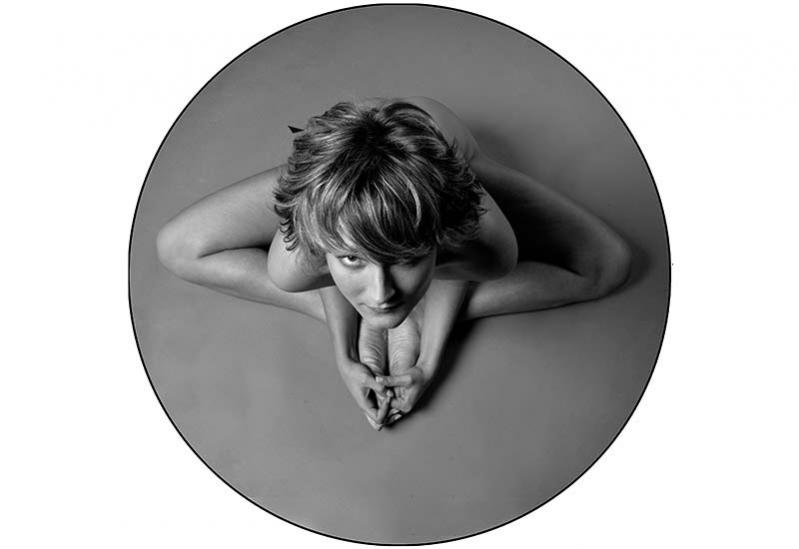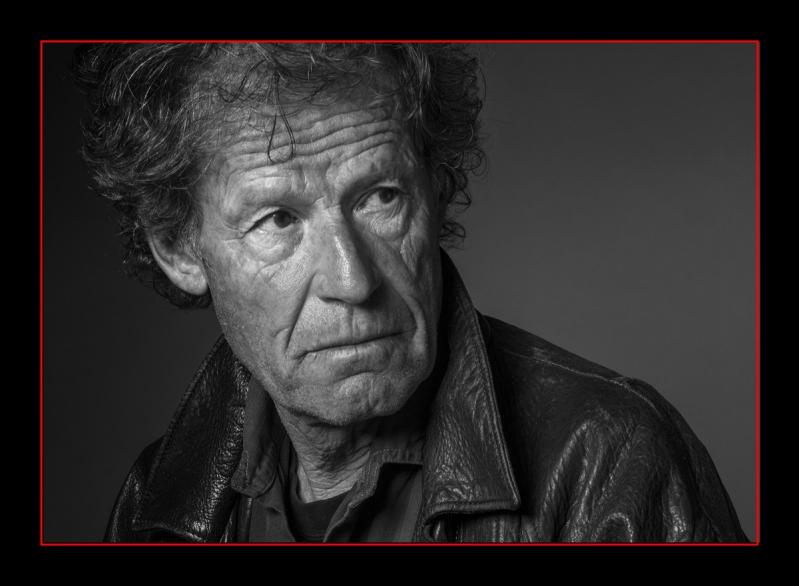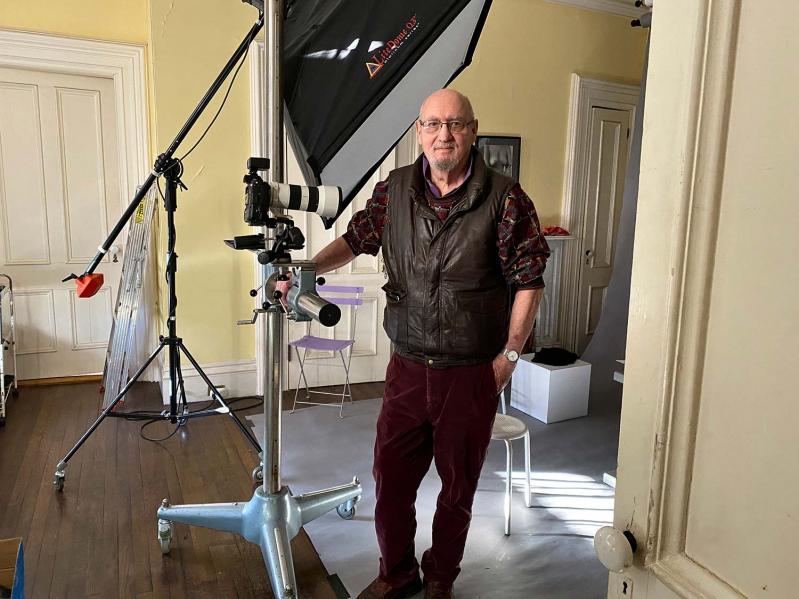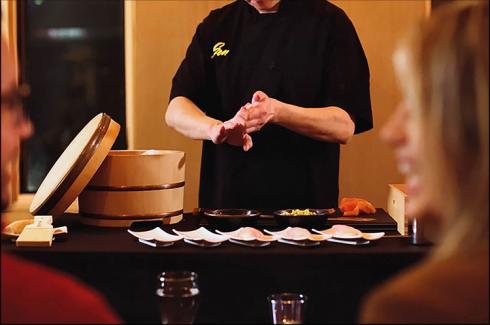Jonathan Morse is perhaps best known in these parts as a photographer, but his talents and accomplishments are wide ranging. Asked when he started taking pictures, he showed a visitor to his Sag Harbor studio a photograph of himself at age 12, draped with a Weston exposure meter and an Argus camera.
He didn't take up the medium with a vengeance until some 35 years ago, after retiring from his career as an architect and real estate developer. (More on that later.) The first show of his work, "In His Own Light," was organized by the filmmaker Lana Jokel and took place in 2001 at Clark Fine Arts in Southampton.
The idea behind that series of portraits was that shooting people in their own surroundings would reveal something significant about them, but, he said, "I realized it didn't." His subjects included George Plimpton, Geoffrey Holder, Peter Duchin, and Peter Matthiessen, and despite the photographer's reservations, the images are arresting.
Mr. Morse credits the photographer Paul Ickovic, whose work has often been likened to that of Henri Cartier-Bresson, for his embrace of portraiture. "He said, stop taking pictures of birds and nudes, you're a portrait artist. That was the beginning. I started taking it more seriously because he was a great photographer."
"I know a lot of photographers who won't touch portraits," he said, citing a quotation from John Singer Sargent: "A portrait is a painting with something wrong with the mouth." But that didn't deter him. After that first show, he decided to focus on studio portraits. One day he ran into the art dealer Peter Marcelle. "When he asked what I was doing, I whipped out my phone," and showed the dealer a selection of portraits. Marcelle offered him a show at the Sag Harbor Whaling Museum.

"Face to Face" went on view there in June 2017. Its 60 subjects included Bob Colacello, Frazer Dougherty, Jack Lenor Larsen, Keith Sonnier, Billy Sullivan, and Reynold Ruffins.
"The simplicity of the setting and the intensity of the moment continue to make the studio portrait the most penetrating rendering of a personality," Mr. Morse has written. His own studio is dominated by a large soft box, a lighting fixture the size of a window, shedding a diffused light that "wraps very much like a classic Renaissance painting." The "Face to Face" portraits were shot with a Sony 45 megapixel mirrorless camera against a gray background, which shades from dark to light in the final photographs, an effect accomplished with the use of Photoshop.
"The iPhone 15 and Photoshop combined is magic," Mr. Morse remarked of a series of landscape shots on his computer screen. By using the "gradient" feature of that application, he can achieve dramatic effects of color and contrast.
"When digital photography came out, most photographers my age, or any age, said, it isn’t really photography, it’s not film. And the editors didn’t want it." He agrees that the first digital images weren't publishable, "but it changed very quickly. We used to tell editors it was film when it was really digital."
Mr. Morse was born and raised in Great Neck. His family's business traces back to his grandfather Adolph Levitt, who invented the doughnut-making machine in 1920. After opening shops and selling the machines widely, he bought a flour mill and began to market a prepared doughnut mix. Mr. Morse's father, Earl Morse, and an uncle also worked in the business.
But there was more to Earl Morse than doughnuts. An avid gardener, he had a passion for tree peonies, and decided to commission a painting of the woody shrub. A Chinese friend told him that if he wanted to have a tree peony painted, it should be done by a Chinese artist, because it's a Chinese flower.
Long story short: Earl began collecting Chinese art. Over the years, he befriended people at the Metropolitan Museum, among them Wen Fong, a Princeton professor of Chinese art and a consultant at the Met, where, in 1982, the Morse Collection was exhibited.
"So I grew up surrounded by that, by someone who thought art was important," said his son.

The future photographer went to the Choate School at age 12 and entered Harvard at 16, where, he said, "I figured out early on that the important thing to do at Harvard was to study with great professors and not worry about what you were majoring in."
After graduation, Mr. Morse worked in the family business, the Doughnut Corporation of America, "but it wasn't very exciting," and he returned to Harvard's Graduate School of Design to study architecture. After practicing for several years, he combined his skills by becoming a developer, working for the next 20 years on the top floor of the Chrysler Building out of a lavish office he'd designed.
In 1974, a construction site near Houston came on the market, and Mr. Morse determined to build a spec office building there. "When I went out to Houston, I was the guy from New York. I remember when we topped out the building the bank lender said, 'This looks great, you guys got this up in no time flat. How many of these have you done?' I told him it was my first one. I thought the guy was going to faint."
He chose to name his company Cowperwood Interests. The author Theodore Dreiser would have loved that: The character Frank Algernon Cowperwood, the protagonist of three Dreiser novels, was based on a man named Charles Yerkes, the developer of the Chicago Loop.
In addition to his photographic practice, Mr. Morse has created books and fine-art prints for artists. He used to use a massive printer, he said, but now most of his work goes directly to the internet.
Take, for example, the website of the sculptor Robert Hooke of Sag Harbor. Mr. Morse photographed each sculpture against a gray or white background, and then, with Photoshop, softened the backgrounds so the pieces seem to float in space. "This is typical of how an artist shows his work today," he said. "I used to do brochures, but now I can't remember the last time I did one."
His Sag Harbor home, which he bought in 1986, was built 130 years earlier by Benjamin Huntting, who lived in the Whaling Museum and built the house for a daughter. All the original rooms have 12-foot ceilings and fireplaces. The walls of his office are lined with some 200 cameras he has collected over the years. "You never heard of a camera I don't have -- every Leica, every Nikon, every Rolleiflex."
Mr. Morse has his fair share of motorcycles, too. "I'm the only person I know of who has two degrees from Harvard and a Formula One motorcycle-racing license," he said, and he has the photographs to prove it. One shows him at age 65 racing around a sharp curve on a custom Buell motorcycle; in another, he's 19, on a Ducati.
He says his days of racing yachts and motorcycles are behind him, but given his life story, there might be a grain of salt lurking somewhere in that remark.




